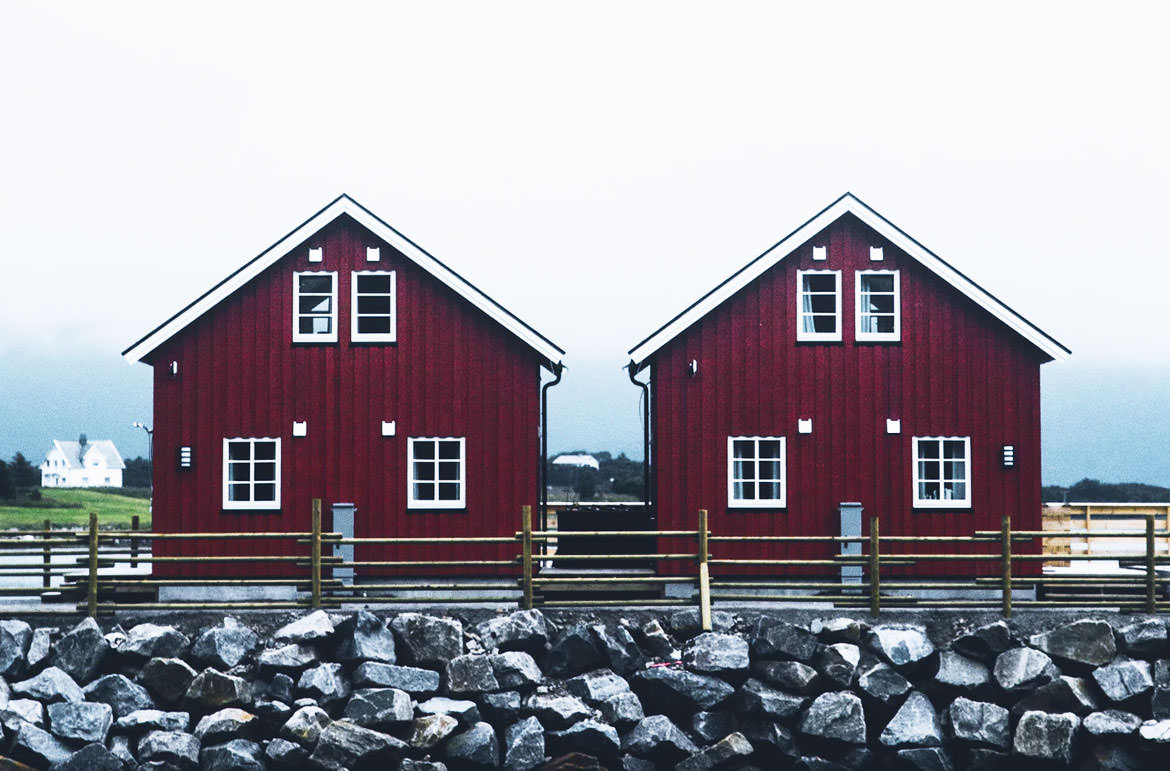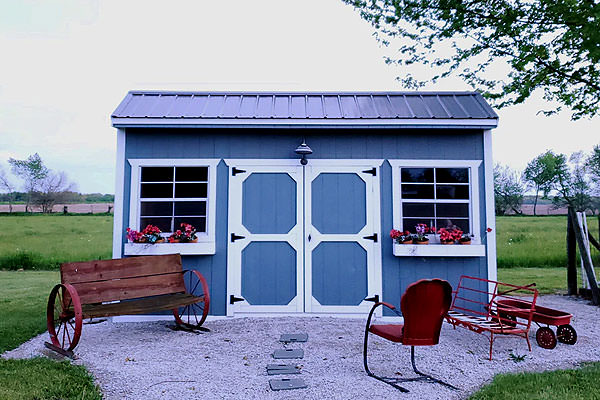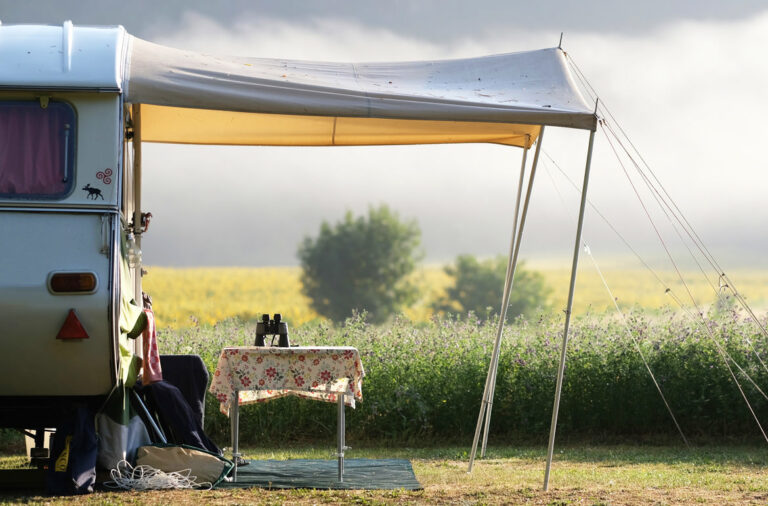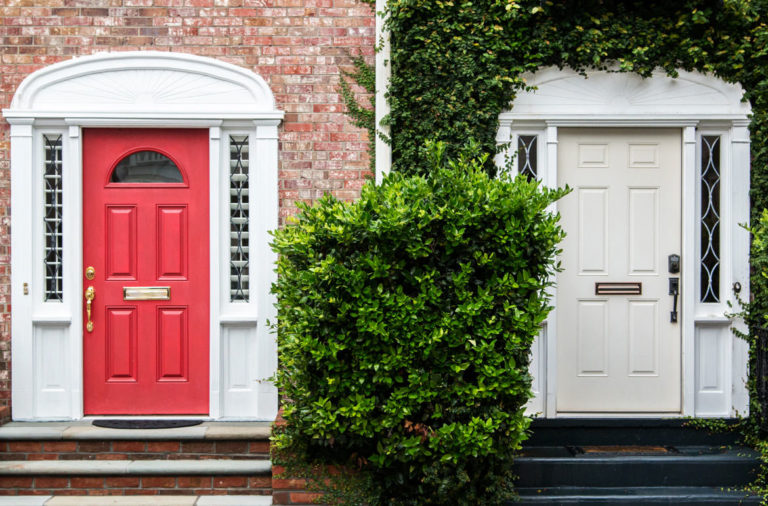
Another question I regularly get asked is – Can you build 2 granny flats on one property?
Simply put – no. Unfortunately, one of the 4 key regulations for building a granny flat is that on your property you can only have one secondary dwelling with your primary dwelling (main house). However, I will cover some ideas you may not have thought of.
I will discuss ideas on how you can make alternative ideas work.
DON'T PAY A FORTUNE FOR YOUR GRANNY FLAT. Find out how to deal with council and build a granny flat for the lowest cost possible. Learn More.
I’ll cover why it is important to follow the rules. If you don’t, it will mean large fines and other implications if you get caught.
Ideas to Make This Work
There are a few ideas that can possibly allow you to have 2 granny flats on the one property.
The first is the most simple – and legal – option.
You could buy a small two-bedroom house, that is basically the size of a granny flat anyway. As long as it is on a block that is big enough, you can still build a granny flat on the same block of land.
NOTE: Another idea is a bit risky, well, illegal – so be careful if you decide to try this!
But there are many known cases of granny flats being constructed without the necessary approval. This is not always the case – as I said, you are taking a risk.
But often it just takes too much time and too many assets for Council to check every granny flat for approval. For example in a suburb near where I live, a local estate agent has told me that 60% of granny flats are not approved!
So, if you are willing to take the chance, you can consider converting part of your existing home into a granny flat.
This conversion is only classified as a granny flat if:
- You separate part of the house, and
- This separated part also has its’ own entrance, cooking and bathroom utilities, and an outdoor area.
Once having finished this conversion, with the main house having “2 separate living spaces” you can then try also building a granny flat out the back through your local council.
Another option that is illegal, but done anyway in this Suburb I mentioned above, is to build both a studio granny flat and a traditional granny flat.
You would build the traditional granny flat first.
Then, if you propose to build a studio granny flat under 35 square metres, that does not include a kitchen, you may be approved under some rules with council as well.

Tiny granny flats can be installed fairly quickly and may not need any council approval.
As some cheaper granny flat options don’t require council approval. You can add in a kitchenette afterwards, or simply share the kitchen in the main home.
This tends to work as the space of the studio granny flat is tiny.
Why Council Places this Restriction on Property Owners
Council has created this rule as one of the 4 key requirements in place to be allowed to build a granny flat.
It is basically a way of streamlining the rules that are required to build a granny flat on your property.
After all, you must also have enough space on your property to meet their other regulations, such as;
- Setbacks, and
- Floor space ratios.
However, this does not mean that you cannot find a loophole around their regulations.
For example, a granny flat does not always need to be established in conjunction with another dwelling – there are loopholes around building on vacant land.
Also, it may be possible to both subdivide your land and build a granny flat, if you split your Torrens title first.
It is also important to note that every Council has different regulations, so what applies to one may be totally different in another.
You can also weigh up the pros and cons of a house extension and a granny flat. And if floor space ratios allow, extend the primary dwelling and still legally build a granny flat.
Can You House a Second Granny Flat “On Wheels” on Your Property?
Now we are looking for ideas of things that could work as a second ‘granny flat’ on your property.
So, they are currently classified as “caravans”. Meaning, the rules for tiny homes are a little bit blurry.
What is clear is that they are a “temporary structure”, and so if your Council find out about them, they do have the authority to:
- Limit the amount of time you can permanently reside in one.
For example, the rules in NSW may allow:
- A tenant that is not related to any resident/s of the main home occupy them for a short-term period of:
- No longer than 48 hours at a time, and
- No more than 60 days a year.
UNLESS, that is:
You make your “caravan” (that is, your tiny home) a fixed structure.
This involves:
- Fixing it to your land but not plumbing it, so the occupants share the bathroom, kitchen and laundry with the main home.
If you follow all the regulations in the CDC, it may be approved as a permanent structure, and a second granny flat, if it is:
- Less than 25 square metres.
- Made a fixed structure, and
- Does not have a kitchen / kitchenette.
It is worth calling your local Council – it really does depend on the Council your property is in, their regulations, and even how generous they are feeling.
Note that tiny homes are a tiny dwelling – hence why you may be approved – but you must be prepared to live minimally within one.
For a full insight into tiny homes and whether it is worth having both on your property, you can read about Tiny Homes vs. Granny Flats.
What About an Exempt Development?
Another idea for something that could potentially be used as a second ‘granny flat’ on your property is an exempt development.
See, some minor builds do not require any planning or any approval from your Council or certifier. This is known as exempt development and is work that has very little impact on your property.
As long as your proposed build meets all of the regulations for exempt development, approval may not be necessary, and your second ‘granny flat’ may be fully legal.
There are several standards that you must meet though.
These include your land itself. Although the majority of properties in NSW are permitted to have an exempt development project built on them, some land is prevented. This includes:
- Heritage listed properties.
- Environmentally sensitive areas.
- Land that is marked out in Schedule 4 as being ruled out from the General Exempt Development Code, which can be seen here.
- Land on your property that is in the middle of a foreshore building line, and its correspondent waterline.
These details for most properties in NSW can be found by using the NSW Planning Portal, or by contacting your local Council and buying a planning certificate. However, if unsure, it is always best to contact Council and ask what size building you are allowed to put on your land under an exempt development.
Now, if your land has passed the test, there are also specific standards for the building that you must meet to qualify for an exempt development in NSW. Some of these include:
- In rural zones RU1, RU2, RU3, RU4, and RU5, a floor area no bigger than 50sqm. In every other zone, a floor area no bigger than 20sqm.
- If in the rural zones listed above, be placed at the rear of the building line of any road frontage.
- No taller than 3m above the existing ground level.
- Setbacks of 900mm from all boundaries, and a minimum of 1m from any registered easement.
- If it is placed alongside another building, be put in a position where it does not hinder the entrance to, or exit from, or any fire safety measures inside that other building.
- That the roof water, when departing, not be an annoyance to adjoining property owners.
- If in a residential zone and there are any metal elements on the building, that these be factory pre-coloured and show little reflection.
- If in land susceptible to bushfires, and you are placing the building less than 5m away from another home, whether this be yours or your neighbour’s, that you make the building out of fire-resistant material.
- That there are no more than 2 of these developments on your property.
A full list of regulations can be seen at the NSW Legislation website.
An important one is that these buildings are also not allowed plumbing, so a kitchen or bathroom would not pass the test. You can instead, for example, use the building as a storage unit, a backyard garden room, a cabin, a home office, a cubby house, or an area where you can relax and perform your hobbies, such as yoga, and then use the toilet and shower in the main home.
Interested in what may be a legal way to get another ‘granny flat’ in your backyard, legally, and without even needing approval? More information is available in the Understanding exempt development fact sheet.
Fines and Implications if You are Caught
There are quite severe consequences for anyone caught doing the wrong thing – that is, with a granny flat on their land that is not approved.
As Council does not always monitor granny flats, a lot of the time a granny flat that has not been approved is not discovered until someone is trying to sell their property. Or a neighbour gets on the wrong side of you and wants to dob you in.
If you advertise a property for sale that has a granny flat, then:
- If your granny flat does not meet all legal rules, you can be found to have:
- Undertaken deceitful, dishonest, deceiving behaviour.
The consequences of this are large fines.
However, if Council does find out about your illegal granny flat whilst you are still the owner of the property, they have the authority to:
- Carry out additional works to ensure they obtain the necessary approval (approval you should have obtained initially).
This includes:
- Handing you a “Notice of Intention to Serve”. This means that you have only 3 weeks (21 days) to correct the issue.
- If you do not obey within the time set out, handing you a “Notice to Remedy”. This means that they now have authorised you to remove the granny flat.
- If you still do not obey orders, they can take you to Court, where you will be fined until the granny flat is fully demolished.
It is also important to note that not gaining approval may also create problems with insurance coverage. If you have an episode take place in or because of the granny flat, you may not be covered by insurance.
There is a known case of insurance not covering the primary or secondary dwelling, from a fire that started in the granny flat, which was not approved.
Conclusion
It is one of the main regulations surrounding building a granny flat that your property must only have:
- 1 principal dwelling (the main home), and
- 1 secondary dwelling (the granny flat).
Meaning, you are generally not allowed to build a second granny flat on your property.
However, there are loopholes to this regulation – some legal, and some a little bit risky.
They include:
- Buying a small, 2-bedroom house (which is pretty much the size of a granny flat), then building a secondary dwelling on the same property. This is both the simplest and a legal option.
- Converting part of your main home into a granny flat, then building a granny flat out the back of your block.
Please note: A conversion is classified as a granny flat, meaning building another secondary dwelling will be illegal, so be careful if attempting this.
- Building both a traditional granny flat (first) and a studio granny flat (second).
Please note: Also illegal, but might be approved, especially if the studio granny flat is kept under 35sqm, without a kitchen.
- Building a granny flat (first), then building a tiny home, making it a “fixed structure”. This is very unclear territory as these are classified as “caravans” but keeping them small means they may be approved.
- In many states, you can put another building in your yard thanks to ‘exempt development’. In NSW that is up to 20sqm – or even 50sqm in some rural areas – and less than 3m tall. These are legal and don’t need approval.
There are many known cases of granny flats being constructed without being approved – but it is a big risk!
You can have issues with insurance coverage, and Council has the authority to impose on you large fines or even make you demolish your granny flat.
So, I do suggest calling your local Council and finding out their regulations. You will find they do change between Councils’, and even depending on the generosity of who you speak to on any given day.












